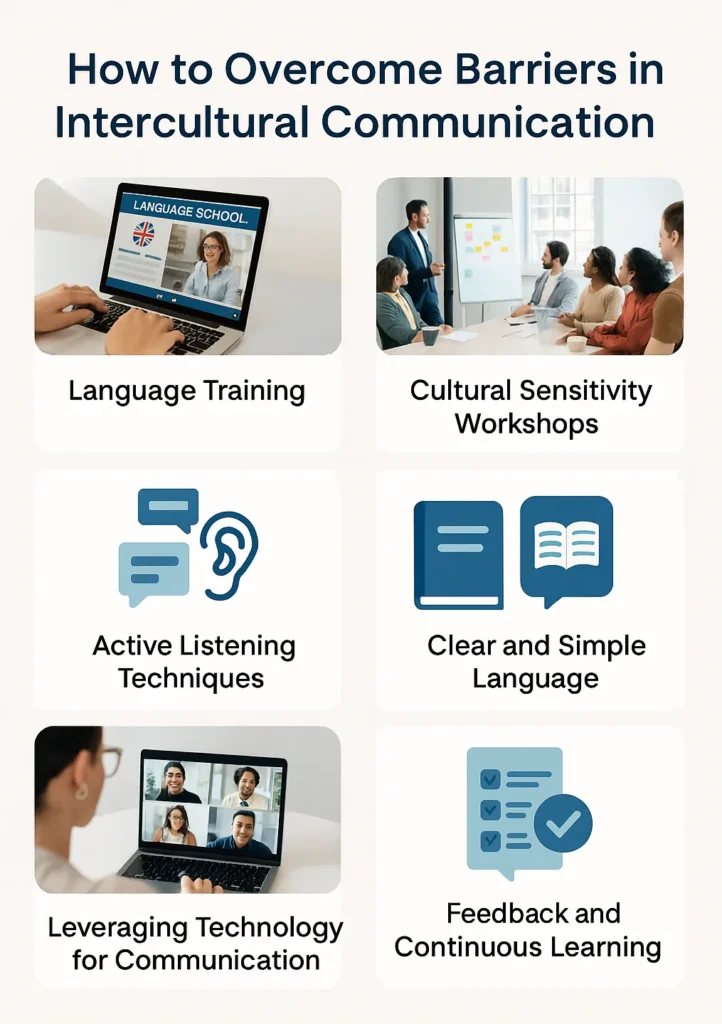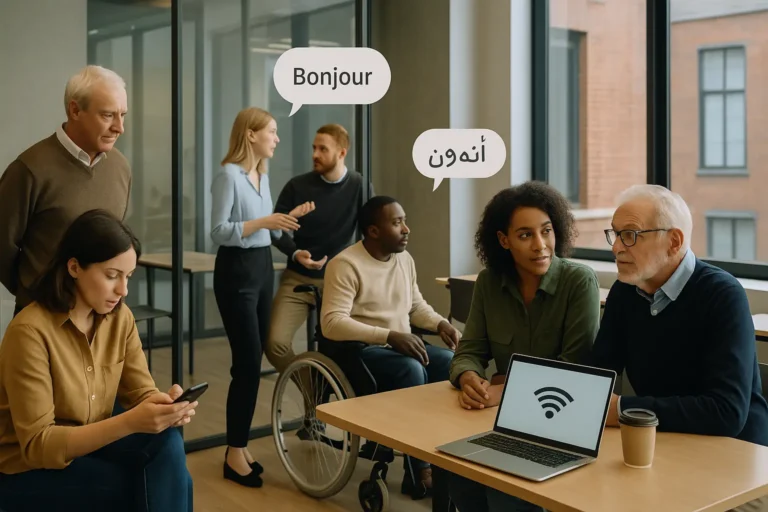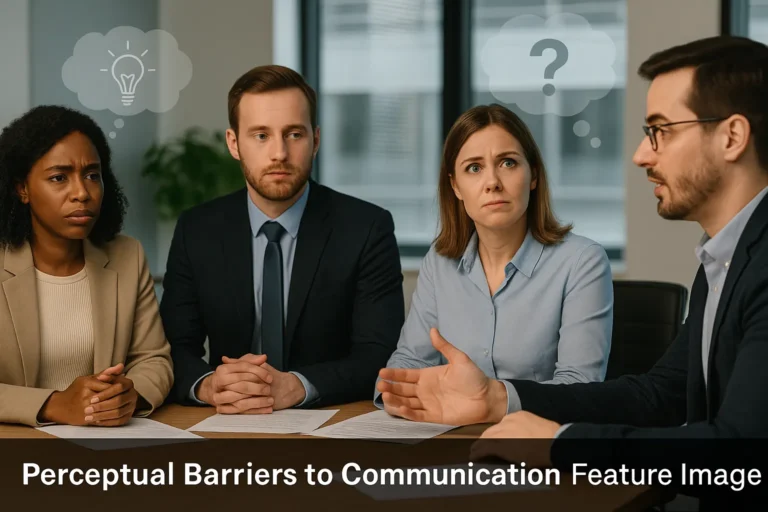Barriers to Intercultural Communication
Effective intercultural communication has become essential as our world grows more interconnected. Yet, even with the best intentions, people often encounter barriers to intercultural communication—from language misunderstandings and cultural differences to nonverbal cues that don’t translate. These challenges can lead to confusion, misinterpretation, or even conflict, making it difficult to build genuine connections across cultures.
Understanding Intercultural Communication
Intercultural communication refers to the process where people from different cultural, ethnic, or social backgrounds share ideas, feelings, or information. It goes beyond language—it’s about bridging differences in values, beliefs, traditions, and expectations. As experts like Edward T. Hall and Geert Hofstede have shown, even gestures and everyday habits can mean very different things in different settings. Hofstede Insights is a great resource for exploring these cultural differences in detail.
In today’s workplaces and communities, intercultural communication isn’t just helpful—it’s necessary. Businesses, classrooms, and friendships all benefit when people make the effort to learn about and adapt to other cultures.
Key Barriers to Intercultural Communication

Let’s break down the most common obstacles that can disrupt intercultural communication:
Language Barriers
Language differences are often the first challenge people notice. These include:
- Different native languages or dialects
- Accents and pronunciation
- Idioms and slang that don’t translate
- Technical or industry-specific jargon
Even when people share a “common” language, like English, subtle nuances can lead to misunderstandings. According to research published in the Journal of Intercultural Communication Research, improving language proficiency and avoiding slang can enhance team productivity and reduce miscommunication. Consider using simple, clear words and double-checking meaning when working across cultures.
Cultural Stereotypes and Prejudices
Stereotyping and ethnocentrism (the belief that one’s own culture is superior) create invisible barriers. When people assume all members of a group act a certain way, or when they judge behaviors through their own cultural lens, real communication suffers.
- Example: A team leader assumes Asian colleagues are always shy and avoids giving them speaking opportunities, missing out on valuable input.
Cultural relativism—the practice of understanding a culture on its own terms—helps break down these walls.
Misreading Nonverbal Cues
Nonverbal communication—gestures, facial expressions, personal space—can easily cause confusion. For example, direct eye contact is respectful in some cultures and rude in others. Physical touch, hand gestures, and even silence can all be interpreted differently depending on context.
Paralanguage—the tone, pitch, and pace of speech—can also change meaning.
High-Context vs. Low-Context Cultures
Some cultures (Japan, Arab countries) rely heavily on context, shared history, and nonverbal signals. Others (U.S., Germany) value direct, explicit communication. Misunderstandings can occur when these styles clash.
Example: A U.S. manager asks for a clear yes or no; a Japanese colleague gives a nuanced answer, hoping to avoid confrontation.
Emotional and Psychological Barriers
Strong emotions, whether excitement, frustration, or anxiety, can cloud understanding. Anxiety about making mistakes, fear of offending, or low confidence can stop people from fully participating in conversations.
Power Distance and Hierarchical Barriers
Cultures differ in how they view authority. In high power distance cultures (e.g., India, Russia), people may avoid challenging leaders. In low power distance settings (e.g., Scandinavia), open dialogue is encouraged. This impacts who speaks up in meetings and how decisions are made.
Technological and Digital Barriers
Remote work, time zones, and digital platforms introduce new challenges. Written messages can lose tone and context, and virtual meetings often miss nonverbal cues.
Use video conferencing when possible, clarify important points in writing, and be mindful of response times due to time differences.
Decoding and Encoding Challenges
Both sending and interpreting messages are filtered through cultural expectations. What feels “clear” to one person may seem confusing or even rude to another.
Action tip: Check for understanding regularly and invite feedback on your communication style.
Code-Switching and Language Adaptation
People may switch languages or dialects depending on who they’re speaking with. While this can build rapport, it can also leave some people feeling excluded.
Action tip: Encourage inclusive conversations and offer summaries when switching languages or codes.
Building Intercultural Competence
Improving intercultural competence involves growing your awareness, sensitivity, and adaptability. Key concepts include:
- Cultural Intelligence (CQ): The ability to function well across cultures. Self-assessment tools can help you identify strengths and gaps.
- Feedback Loops: Use regular check-ins and open feedback to catch misunderstandings early.
- Conflict Resolution: Different cultures handle conflict in unique ways. Learn about collaborative, confrontational, or avoidant styles, and adapt your approach.
Practical Strategies for Overcoming Barriers

- Language Support: Offer translation services and use plain language.
- Active Listening: Show interest, reflect back what you’ve heard, and check for understanding.
- Diversity Training: Invest in ongoing learning around cultural norms and values.
- Inclusive Technology: Use accessible platforms and ensure everyone can participate.
- Case Studies: Analyze real-world success stories from multinational organizations, highlighting how teams overcame language, time zone, or cultural style challenges.
Common Barriers and Solutions
| Barrier Type | Example | Practical Solution |
|---|---|---|
| Language Difference | Idioms don’t translate | Use simple words, check for understanding |
| Stereotyping | Assuming quiet means disinterest | Ask open-ended questions |
| Nonverbal Misread | Misinterpreting gestures | Observe and clarify when unsure |
| Hierarchy | Employees silent with management | Invite anonymous feedback |
| Digital Challenges | Misunderstood emails | Use clear subject lines, video calls |
Case Example
Consider a project team spread across Europe, Asia, and South America. Initial meetings were tense, with miscommunications about deadlines and feedback. Once the team adopted video meetings, set a “plain language” rule, and encouraged everyone to share a bit about their local work customs, trust improved. Productivity rose, misunderstandings dropped, and the team delivered ahead of schedule.
The Road to Continuous Learning
Intercultural competence is a journey. Regularly revisit your approach, ask for feedback, and stay curious. Even small changes—like learning to pronounce someone’s name correctly or asking about holidays—can build bridges. For more practical tips, check out this guide from Hofstede Insights.
Conclusion
Overcoming barriers to intercultural communication is about more than avoiding mistakes. It’s the key to building stronger, more creative, and more resilient connections—whether in business, education, or daily life. By staying aware of language, cultural expectations, power differences, and technology, you set the stage for more open and productive exchanges. Keep growing your cultural intelligence, listen with curiosity, and remember: every cross-cultural encounter is a chance to learn and grow.






